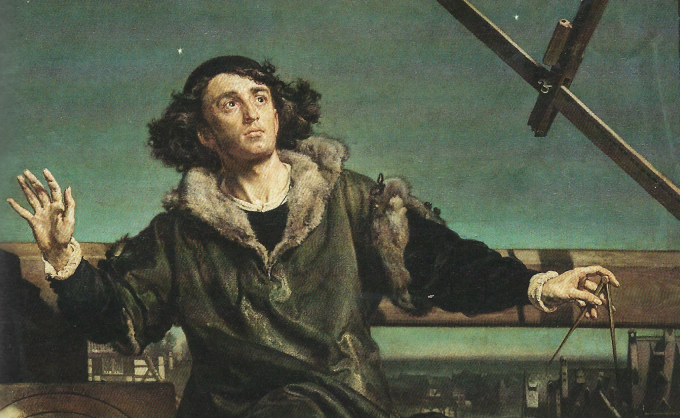Inspired by and published for the 480th Anniversary of Nicolaus Copernicus (1473-1543) the most important thesis De revolutionibus orbium coelestium (On the Revolutions of the Celestial Spheres). Nicolaus Copernicus was a Renaissance polymath, mathematician, astronomer, and Catholic canon, who formulated a model of the universe that placed the Sun rather than Earth at its centre. The publication of Copernicus’s model in his book De revolutionibus orbium coelestium, just before his death in 1543, was a major event in the history of science, triggering the Copernican Revolution and making a pioneering contribution to the Scientific Revolution. Copernicus was born and died in the Kingdom of Poland. He studied astronomy at the Jagiellonian University in Poland. Copernicus was polyglot and polymath, he obtained a doctorate in canon law and was a mathematician, brilliant astronomer, physician, classics scholar, poet, translator, diplomat, and economist.



The Copernicana Collection at Uppsala University Library is a collection of books that were owned or used by Nicolaus Copernicus (1473–1543). The Copernicus manuscripts originates from the stolen war loot during the 30 Years War. Some of Copernicus academic research remnants can be found at Jagiellonian University (Collegium Maius) and Jagiellonian University Library in Kraków. It is interesting to visit Frombork Cathedral in Poland, where Copernicus lived and worked most of his life.



Notes: The Swedish army whilst ravaging the country under the command of Gustavus II Adolphus, the Swedish King, were victorious, but poor in books, and therefore were especially interested in capturing (stealing) artifacts from important libraries, now when there was an opportunity. The books which Nicolaus Copernicus had owned or used had in different ways reached the chapter library of Frauenburg and the library of the Jesuit college of Braunsberg after his death. Now they became Swedish loot. They were soon loaded for transport to Sweden, and finally to the university at Uppsala, where they became an important addition to the library that had been founded there only five years earlier. This was an essential part in the efforts of Gustavus II Adolphus to improve the university at the expense of Poland. At the Uppsala University Library is where the great majority of these books have been kept ever since, with the exception of single volumes that for different reasons have ended up at other Swedish libraries.

Copernicus as a Revolutionary Thinker, as reflected in the special fountain pen designs by Montegrappa, Visconti and Montblanc – as leading writing instruments manufacturers



